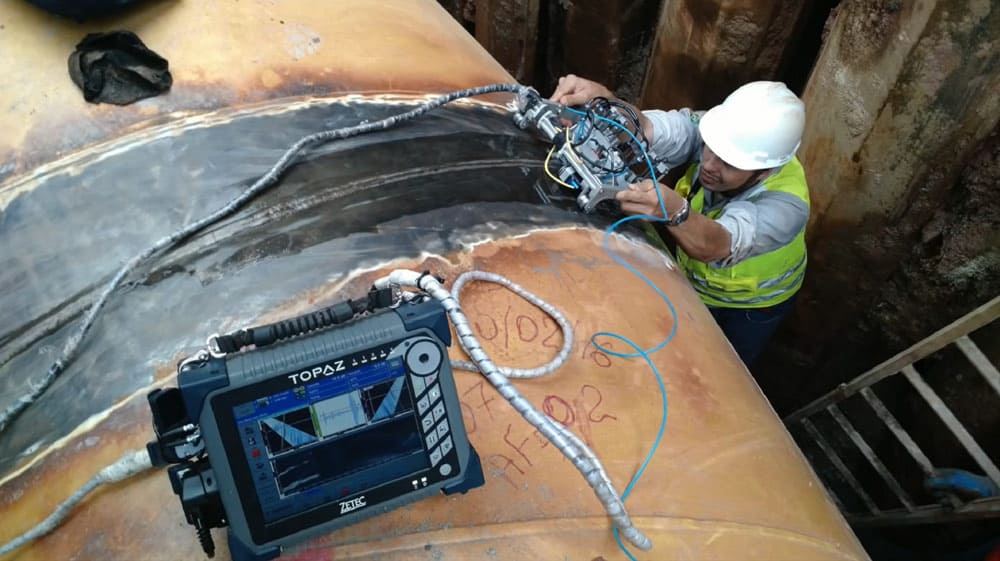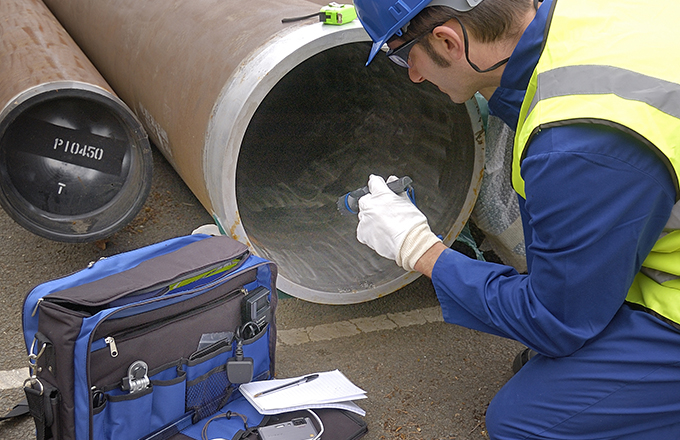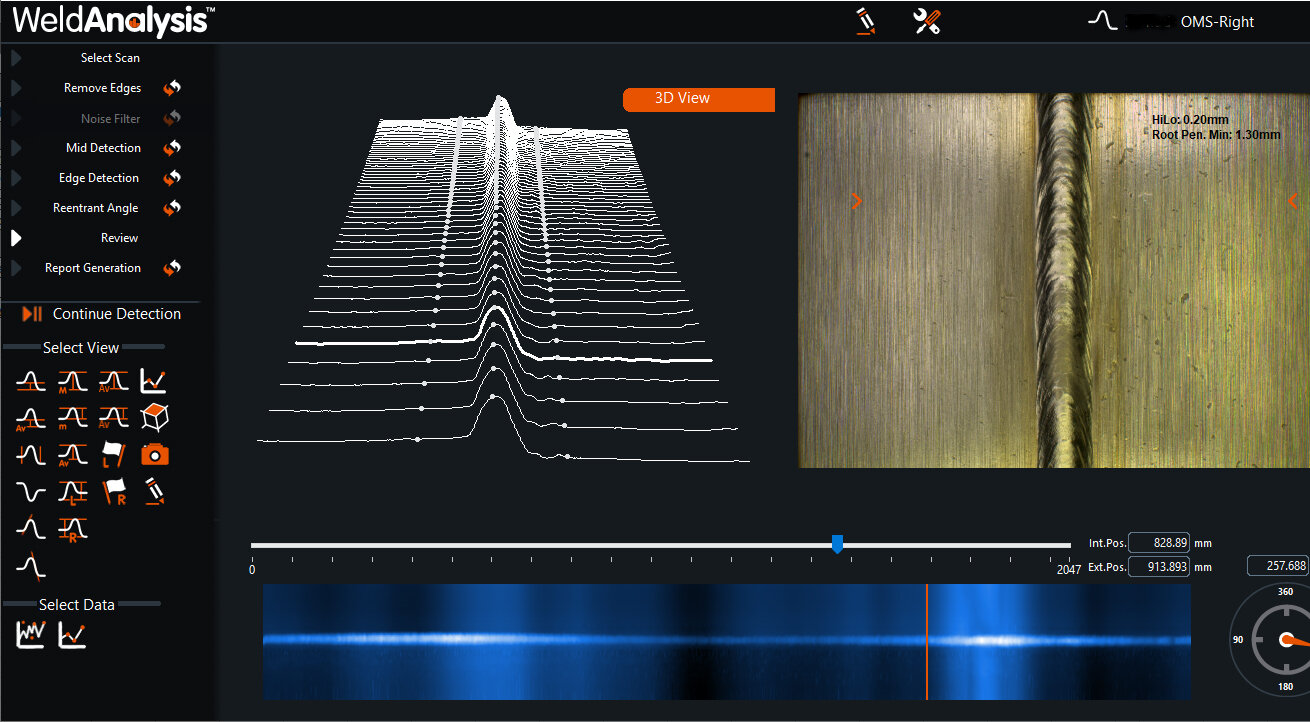Why Pipeline Welding Inspection is Essential for Long-Term Pipeline Security
Why Pipeline Welding Inspection is Essential for Long-Term Pipeline Security
Blog Article

Best Practices for Pipe Welding Inspection: Methods, Standards, and Procedures to Attain Quality Control and Compliance
Reliable pipe welding assessment is vital for making sure the honesty and safety and security of critical infrastructure. Understanding the complexities involved in each phase of evaluation is crucial to accomplishing compliance and reliability in pipe systems.
Relevance of Welding Assessment
The integrity of welded joints is critical in guaranteeing the safety and reliability of pipeline systems. Correct welding strategies and detailed examination procedures are vital to avoid failures that can result in catastrophic incidents, ecological damage, and loss of life. Pipeline Welding Inspection. Welding examination acts as a preventative action, determining problems such as cracks, porosity, and insufficient fusion before they escalate right into severe issues
In addition, pipeline systems frequently run under high stress and extreme problems, making the quality of welds much more essential. Governing conformity is another substantial aspect, as numerous requirements determine the quality control processes that have to be adhered to in pipe building and construction and maintenance. Failing to abide can lead to legal ramifications and economic losses.

The function of welding inspection prolongs past mere verification of handiwork; it includes the guarantee of lasting operational stability. This entails a systematic method that consists of not just visual assessments yet also advanced non-destructive screening methods. Eventually, reliable welding inspection is an investment in the durability and safety and security of pipe systems, ensuring they work as planned while decreasing risks connected with material shortages.
Secret Examination Techniques

Visual evaluation, frequently the first line of defense, allows for the identification of surface defects such as fractures, damages, and porosity. Ultrasonic screening employs high-frequency audio waves to identify inner problems, providing a complete evaluation of weld integrity. This non-destructive method is specifically efficient for determining discontinuities that might not be visible externally.
Radiographic screening includes the use of X-rays or gamma rays to produce photos of the bonded joint, revealing internal problems. This technique provides comprehensive insights yet may need specific tools and security considerations. Last but not least, magnetic bit screening works for finding surface and near-surface suspensions in ferromagnetic products, using electromagnetic fields and fine iron fragments.
Industry Standards and Rules
Compliance with sector requirements and laws is essential for guaranteeing the high quality and safety of pipeline welding assessments. These requirements provide a framework for best methods in welding procedures, materials, and assessment strategies, enabling organizations to minimize issues and boost the stability of pipe systems. Key bodies such as the American Society of Mechanical Engineers (ASME), the American Welding Society (AWS), and the International Organization for Standardization (ISO) state guidelines that are widely identified and adopted within the market.
In the USA, guidelines from the Pipe and Hazardous Materials Safety And Security Management (PHMSA) govern the safety and security of pipeline procedures, mandating extensive examination procedures. These criteria not just serve to protect public safety and the setting but additionally guarantee compliance with legal and lawful responsibilities. Adherence to the pertinent codes, such as ASME B31.3 for procedure piping, is important for keeping functional performance and governing compliance.
Furthermore, continuous updates and modifications to these criteria mirror technological innovations and progressing industry techniques, stressing the need for companies to remain enlightened and train workers appropriately. Inevitably, robust conformity with well established standards promotes count on and dependability in pipeline framework, protecting both stakeholders and properties.
Reliable Assessment Treatments
Efficient examination treatments are vital for determining potential defects in pipe welds and making sure the total integrity of the system. A methodical technique to inspection includes numerous vital stages, including pre-weld, in-process, and post-weld assessments. Each stage plays an essential duty in keeping quality control.
During pre-weld inspection, it is necessary to assess the materials and joint configurations, guaranteeing compliance with project specifications. In-process inspections involve monitoring welding methods and specifications, such as warm input and travel speed, to avoid defects from occurring. This stage permits real-time adjustments to welding practices.
Post-weld inspections consist of non-destructive screening (NDT) methods like radiography, ultrasonic testing, and magnetic fragment testing. These approaches aid identify inner and surface defects that could endanger the pipeline's capability. Paperwork of all assessment activities is extremely important, giving a traceable record that supports compliance with industry criteria.
Educating and accreditation of inspection employees even more enhance the performance of these treatments. By sticking to a structured examination procedure, companies can alleviate risks, make certain conformity, and ultimately deliver pipelines that fulfill rigid security and efficiency requirements.
Typical Challenges and Solutions
Pipeline welding examination provides numerous common obstacles that can impact the quality and safety and security of the final item. One significant difficulty is the irregularity in welding methods and products, which can lead to irregular weld quality. To address this, it is critical to establish standard treatments and training for welders, guaranteeing a consistent approach throughout tasks.

Ecological aspects, including temperature level and humidity, can likewise influence the welding process, possibly leading to splits or insufficient fusion. Implementing regulated environments and sticking to pre-weld hop over to here procedures can mitigate these dangers.
Conclusion
To conclude, the execution of finest practices for pipeline welding inspection is necessary for guaranteeing quality control and conformity with market standards. An extensive approach, incorporating numerous strategies such as visual, ultrasonic, and radiographic screening, facilitates the recognition of problems throughout all phases of the welding process. Pipeline Welding Inspection. Adherence to established policies and reliable examination procedures not only boosts the reliability and safety and security of pipeline systems yet likewise alleviates threats linked with welding problems, thus advertising general functional honesty
Compliance with sector standards and laws is vital for ensuring the high quality and informative post safety of pipeline welding evaluations. These requirements provide a framework for finest methods in welding procedures, products, and evaluation techniques, enabling companies to decrease defects and enhance the stability of pipe systems.In the United States, laws from the Pipe and Hazardous Products Safety check these guys out Administration (PHMSA) govern the safety of pipeline operations, mandating rigorous inspection protocols. A methodical technique to assessment includes a number of essential phases, including pre-weld, in-process, and post-weld inspections.In conclusion, the implementation of best practices for pipeline welding examination is essential for ensuring top quality guarantee and conformity with sector criteria.
Report this page